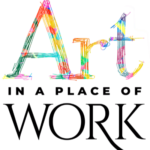
20 Mar The power of creative habits: a neuroscience perspective

What kills creativity and, importantly, how can it be preserved and enhanced? In the series of articles examining creativity in the work place, here is a neuroscience perspective in a guest post by Dominika Pikul, an Art in a Place of Work partner.
Teaching creativity and enhancing creative thinking are the most useful things you can do in your organization, if it is at all interested in coming up with new solutions to solve problems. Oh, that would be every organization…
George Land was a trailblazing researcher, inventor and founder of an institute to study the enhancement of creative performance. In the 1960s, NASA asked him to to assess the creative potential of its engineers and scientists, to measure their divergent – non-linear, out of the box thinking, Land designed a series of tests which typically involved asking participants to come up with as many different ideas or solutions as possible in response to a given prompt or question, within a set time limit.
The Torrance Tests of Creative Thinking (also developed during the 1960s, by other researchers and commonlty used to test for creativity) involves asking participants to come up with as many uses as possible for a common object, such as a paperclip or a brick. A typical answer for a glass jar would be a candy holder, a pencil cup or a paper weight if filled with sand. A less typical answer: a prison for snails, a space helmet for a teddy bear or a device to extinguish candles. You get the picture. But Land didn’t stop there, as his study bumped up against the crucial age-old question – where does creativity come from? Is it nature or nurture? What Land’s researchers found, has not sat comfortably with education experts ever since.
To answer this question, with NASA’s help, Land administered tests of creative thinking to both children and adults, to measure their respective creative thinking abilities. The results of the study were surprising. It turned out that creativity declines dramatically as children progress through the education system. While 98% of 5-year-olds were able to think creatively, only 30% of 10-year-olds, and only 12% of adults were able to do the same.
Since then these results have often been cited as evidence that our educational systems and societal structures may be stifling creativity. As a result, learning experts such as Sir Ken Robinson (**cite) have repeatedly sounded alarm bells, calling for substantial revision to our education systems. Such claims may be considered controversial but one thing is certain: we are all born creatives!
What happens as we grow older? Yes, most experts agree that the education system takes its toll on creativity. The great writer Ursula Le Guin put is most elegantly: “The creative adult is the child who has survived.” But that is not all there is, or at least it’s not quite as simple as that. Neuroscience research has been demonstrating that the explanation lies in the brain itself, and the clues as to potential fixes to our loss of creative thinking abilities can also be found there.
NATURE GIVES, NATURE TAKES AWAY….
What kills creativity lies not in the number of cells adults and children have; that number stays the same throughout life. The secret lies in connectivity between those cells and whether such connetivity is retained and grown – or not.
When you are born, your brain develops at an extremely rapid speed. Synapses, connections between neurons, are formed at an astonishing rate. By the age of two, a child has over one hundred trillion of those, double the number of an adult. What comes next is the process of neuronal pruning as unnecessary connections between neurons are eliminated. What is deemed as unnecessary? The connections you don’t use. Hebbian synaptic plasticity theory tells us, when two neurons are repeatedly activated together, the connection between them becomes stronger. Over time, this repeated firing and strengthening of synapses can lead to the formation of neural networks, which are the basis for learning and memory. If those synapses are not used for a while, they are discarded. Simply put – use it or lose it!
As neuroscientist David Eagleman writes in his book “The Brain: The story of you”, “in a sense, the process of becoming who you are is defined by carving back the possibilities that were already present. You become who you are not because of what grows in your brain, but because of what is being removed”.
THE POWER OF CREATIVE HABITS
How does this knowledge help us foster creativity? Let’s see…
So, we know we are born creative, therefore creativity is not reserved only for artists, writers, musicians, and inventors. We all possess it, at least to begin with.
There is a distinguishing feature, however, that all those people have in common. They are always painting, writing, inventing or making music – they are practicing their creativity! By engaging regularly in their chosen creative activities, individuals can develop a range of skills and habits that can enhance their ability to think. Here, too, practice makes perfect and repeated work on generating new ideas leads to, well, being able to generate new ideas more rapidly and more efficiently. Corpus collosum, that fat piece of “neural rope” which connects the two hemispheres of the brain, has been found to be substantially fatter in musicians! Combine this with critical, analytical skills which we get taught in later life and your ability to solve problems increases.

Further, the ability to “think out of the box” (divergent thinking) is one of the key components of creativity. To foster creativity, we must train ourselves to move away from what have been deemed “correct answers” and start to explore multiple solutions to a given problem. This can lead to breakthroughs and innovations which likely would not have been possible through more traditional, convergent thinking approaches. Artists have often commented on the need to experiment, and to learn from the process of experimentation so as to expand their field of expertise. Picasso put it simply “Go and do the things you can’t. That is how you get to do them.”
Divergent thinking is a fundamental skill and research has shown that it can be developed and enhanced through various techniques which include brainstorming (if done correctly), mind mapping, and various creative exercises. Listening to music has also been shown to increase divergent thinking. There is more to it than just turning on the local radio station, of course, but it is something that can be easily integrated into daily life to enhance creative cognition in various settings, whether at home or at work.
Lastly – remember the “use it or lose it” rule? Creativity needs to be cultivated and refined on a regular basis. As painters are always painting and writers always writing – you should also engage in creative activities regularly. Set aside dedicated time for creative activities of your choice. It can be writing or drawing sketches to visualize material you just read. Interestingly, walking and daydreaming have both been shows to be a remarkably effective cognitive enhancers, so go for a walk and let your mind wonder for a change, without listening to that business podcast or feeling like you are wasting your time if you are not consuming another audio book. Consistency yields results, and before you know it, you’ll end up with unexpected, creative outcomes that exceed many of your expectations.
References:
Land, G., “The failure of success”, TEDxTuscon
Eagleman, D. “The brain: the story of you”. New York : Pantheon Books, 2015
Pierce, D. “What Neuroscience Teaches Us About Fostering Creativity”


